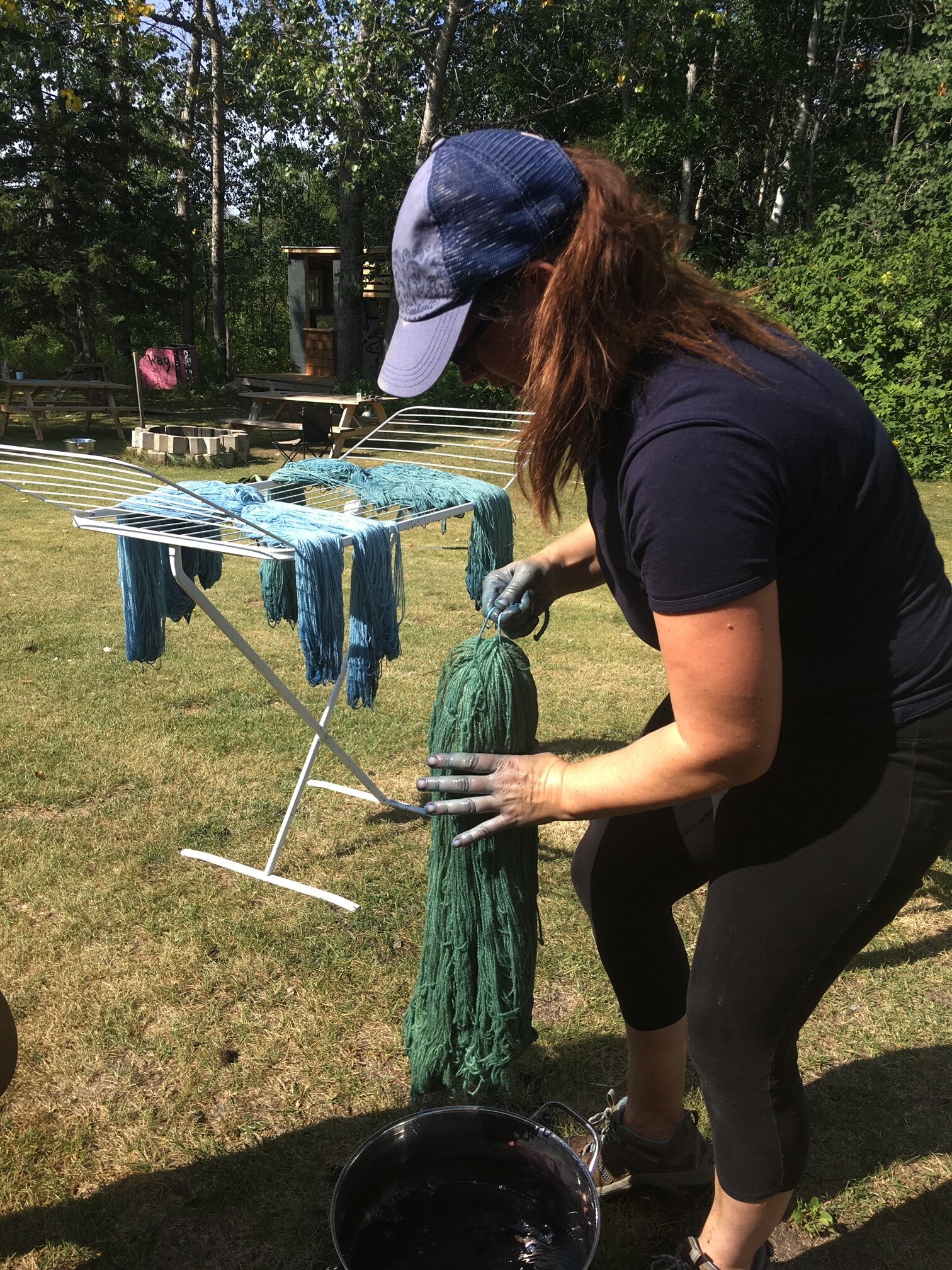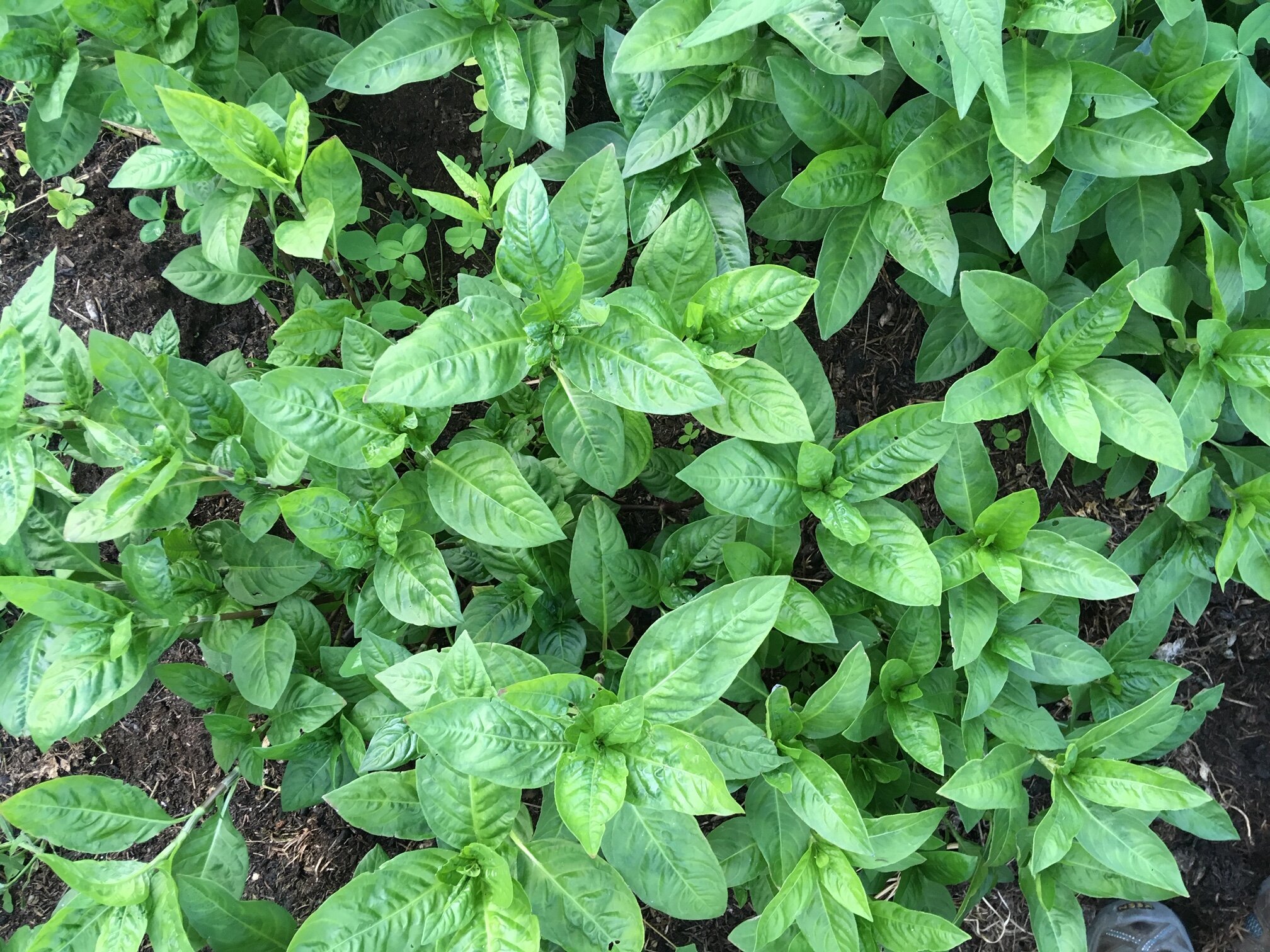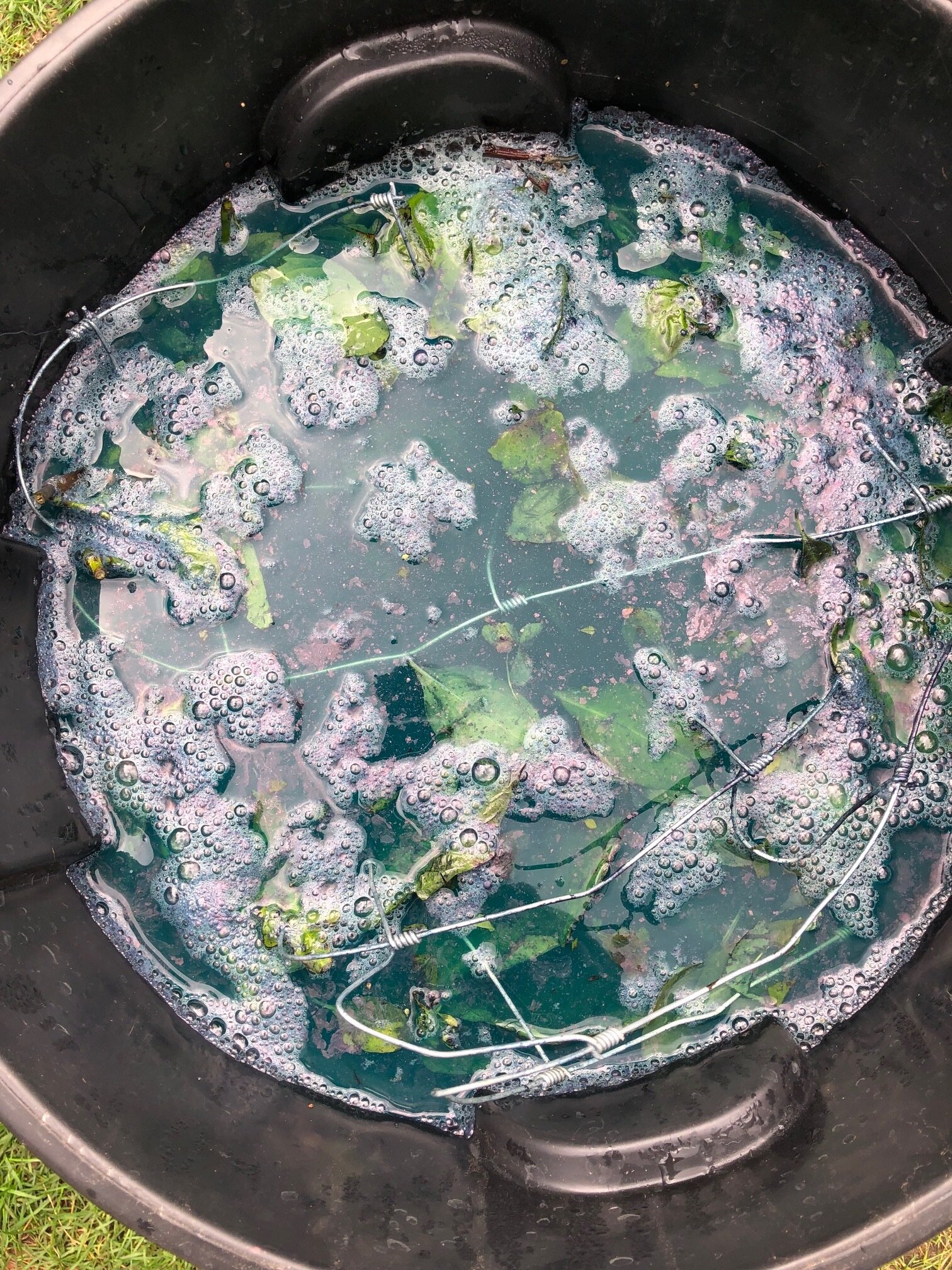We hope you will join us during the Manitoba Fibre Trail as we celebrate our home grown Indigo.
Although the pandemic changed some of our plans, many of our members successfully grew Japanese Indigo (persicaria tinctorium), harvested the leaves and processed the pigment.
Growing natural indigo in our community is a big step towards a more sustainable textile system in Manitoba and we are excited to share this first years’ journey with all of you.
Please join us at Long Way Homestead to learn more about this project.
Saturday, September 12
2pm
Long Way Homestead (click here for a map)
Bring some white yarn or fabric to dip in our community indigo dye vat, learn more about this plant and sustainable textile and indigo production in Manitoba, and join us for a celebration of local, sustainable textiles!
- we will be talking about the community indigo project, and we will have a big indigo vat - so bring some yarn or fabric to dye.
Saturday, September 12
2pm
Long Way Homestead (a stop on the Manitoba Fibre Trail)
We are in the very early stages of an on-going community indigo project. After several meetings this is what we have come up with for this year:
- folks who want to participate will contribute $5 to the project and will receive a small packet of Japanese indigo seeds to grow in their own plot/garden etc.
- Pembina Fibreshed will provide ongoing support for the growing season in terms of tips and tricks for growing Japanese indigo, and links to helpful resources. [see below]
- If people have particularly large gardens then we would coordinate collective 'weeding' and 'harvest' days.
- at the end of the growing season all participants will contribute between 30-50% of their indigo yield to collective processing. We will choose our methods, but probably a combination of the cold water processing method and fresh indigo dyeing.
- as a fibreshed we will host educational events and or mini-workshops at schools, community centres and the Manitoba Fibre Fest using the indigo pigment that we create collectively to demonstrate indigo dyeing, and to promote broader participation in our community indigo project.
(to get involved email us at connect@pembinafibreshed.com)
Indoor Seed Starting Tips
how to start your Japanese indigo
Growing medium: Seeds germinate best in a light, airy soilless mixture such as a combination of peat moss and vermiculite or perlite. A good seed starting mix drains really well so that seeds don’t rot in wet conditions.
Heat: some bottom heat will encourage germination. The top of the fridge is usually a good spot for gentle heat.
Light: once growth starts good bright light is essential. South facing windows are good, fluorescent grow lights are great. Lack of light results in spindly plants that will not thrive.
“Damping off” is a fungal disease that kills small seedlings. Prevent it by using a sterile potting mix and clean pots; avoid over watering and overcrowding, and maintain air circulation around young plants with periodic use of a small fan.
Transplanting: Overcrowding stunts growth, so seedlings must be transplanted into larger containers usually by the time they have a couple of sets of leaves. Now they will need some good compost or soil in the mixture, but be sure it is still a nice light mix that will not compact when watered.
Fertilization: A regular application of a seedling fertilizer will keep them growing strongly.
Moving outside: Plants grown indoors need to be “hardened off”, or gradually acclimatized to outdoor conditions. Put them in a sheltered place out of direct sun and wind for increasing amounts of time each day. Be careful! At this stage even a light breeze can be really hard on little plants.
For even more resources about growing/harvesting/using indigo check out the work of the original fibershed.









